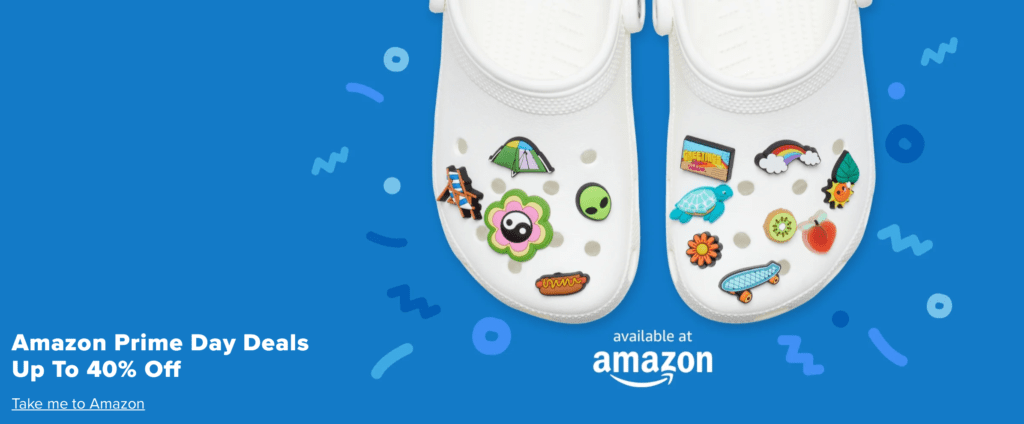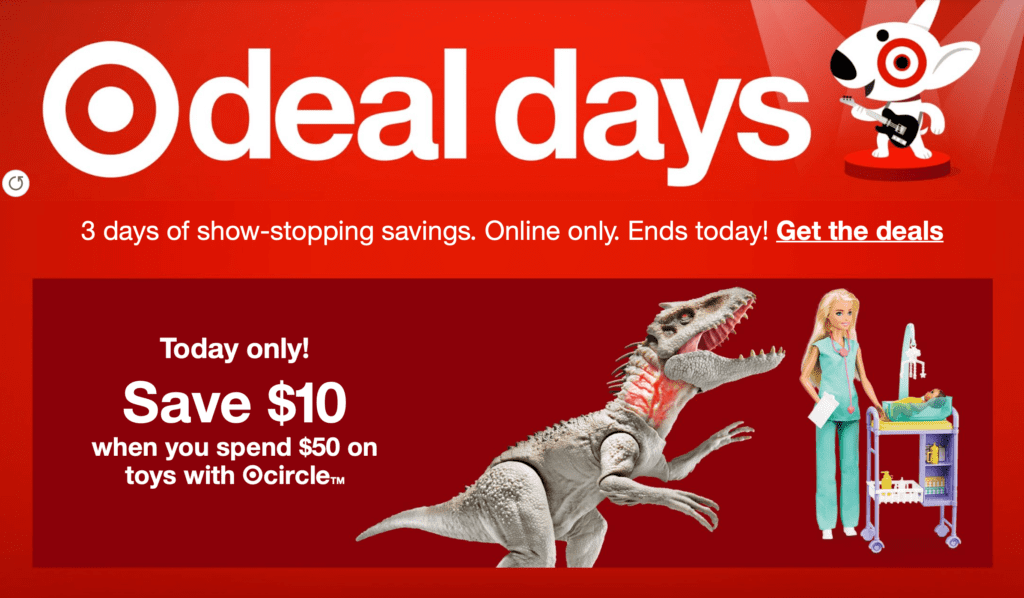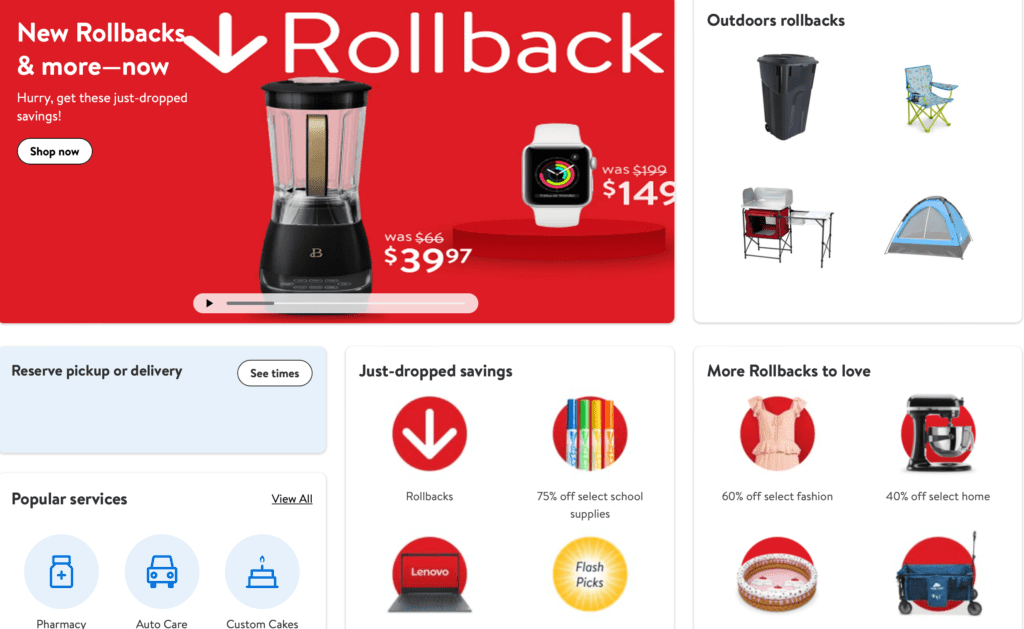There were plenty of deals for shoppers on the first day of Amazon’s big sale day. In a new Digital Commerce 360 panel of 100 retailers, 79 were running promotions on Tuesday, July 13. But most weren’t directly competing with Amazon.
Prime Days, running July 13 and 14, comprise sitewide sales across a range of categories at the No. 1 retailer in the 2022 Digital Commerce 360 Top 1000. But in past years, most large retailers joined in on the promotions trying to capture shoppers’ spending. This year, Digital Commerce 360 looked at retailers across the Top 1000 to see how they discounted on the summer shopping holiday.
Competing with Prime Days
Of the 79 retailers running promotions, only 36.7% had deals that competed with Prime Days in some way. That includes sharing similar time frames or requiring membership to access the deals. Just 12 retailers directly referred to Amazon’s Prime Day with related sales like The Gap Inc.’s (No. 19) “Gap Days” or Target Corp.’s (No. 5) “Deal Days.” Others were more direct, like Joann Inc.’s (No. 266) “Primo Days” or Crocs Inc. (No. 147) referring to Amazon Prime Day directly and even leading customers there.

A banner on Crocs’ home page directed shoppers to Amazon
Just 15.2% of retailers running promotions actually referred to Amazon or Prime in some way, down from 27.2% in last year’s panel. However, 44.3% of retailers did tie promotions to some kind of holiday, Prime or otherwise. While Prime-competing promotions were the largest share of holiday sales, many retailers were also pushing back-to-school sales already. A few, like Macy’s Inc., centered their sales around Black Friday in July.
Target and Walmart take different approaches
Amazon’s most direct competitors took different approaches to Prime Days competition. Target mounted its own set of deals across a range of categories. Deals ranged from 5% to 60% off. It promoted its loyalty program heavily alongside its deals. It touted no membership needed for deals and beat Amazon by offering deals for three days instead of two.

Target’s 2022 deal days advertised on its home page.
Walmart Inc. (No. 2), on the other hand, seemed to ignore the holiday completely. Unlike Target, which generally followed the format of years past, Walmart had no limited-time sales on Prime Days. It didn’t push its paid Walmart+ program. It just listed a few items as part of its regular “Rollback” sales, alongside a small promo for 75% off school supplies. The main header image upon loading the site even appeared distorted. This year is a shift from previous years, where it ran deals alongside Amazon. However, last month, Walmart ran a “Walmart+ Weekend” with listed discounts as much as 53% off, limited to members of its relatively new paid membership program. Last year, Walmart ran a “Deals for Days” promotion with discounts of 30% to 60% with no membership required.

Walmart’s home page on Prime Days 2022, including a stretched image in the main banner.
Discounts on Prime Days
There were a wide range of deals offered on Tuesday. 77.2% of retailers with sales offered some percentage off their goods. Those discounts ranged from 3% to 90%, but the median retailers’ maximum percent off was 50%. Meanwhile, the minimum percent off at the median retailer was 20%.
Other promotions included free shipping, gifts with purchase or dollar-figure discounts. 40.5% of retailers running sales offered two or more types of promotions. Chewy.com, owned by PetSmart Inc. (No. 13), didn’t offer limited time discounts. Instead, it sent a share of profits to pet-related charities.
Many retailers did tie some element of the day’s promotions to its free or paid membership programs. Gap ran a promotion that quadrupled points for its credit card users; Dick’s Sporting Goods (No. 37) doubled points on sale items for its ScoreCard members.
Meanwhile, other retailers touted the lack of a membership requirement to participate in sales. Target had banners bragging that no membership was required to access its deals. However, it did limit its 5% discount on gift cards to members of its free Target Circle loyalty program, along with some other discounts.
A third of retailers offering sales promoted deals sitewide, but many also offered category-specific deals. 29.1% of promotional retailers offered deals on multiple categories.
No discounts for some retailers
While most retailers in the Digital Commerce 360 panel offered sales, 21.0% had no discounts at all. These included retailers with lower margins, like Dollar Tree Inc. (No. 197), or little history of discounting like Harry’s Inc. (No. 192). Most of those not offering deals were consumer brand manufacturers.
Sign up
Stay on top of the latest developments in the ecommerce industry. Sign up for a complimentary subscription to Digital Commerce 360 Retail News.
Follow us on LinkedIn, Twitter and Facebook. Be the first to know when Digital Commerce 360 publishes news content.
Favorite